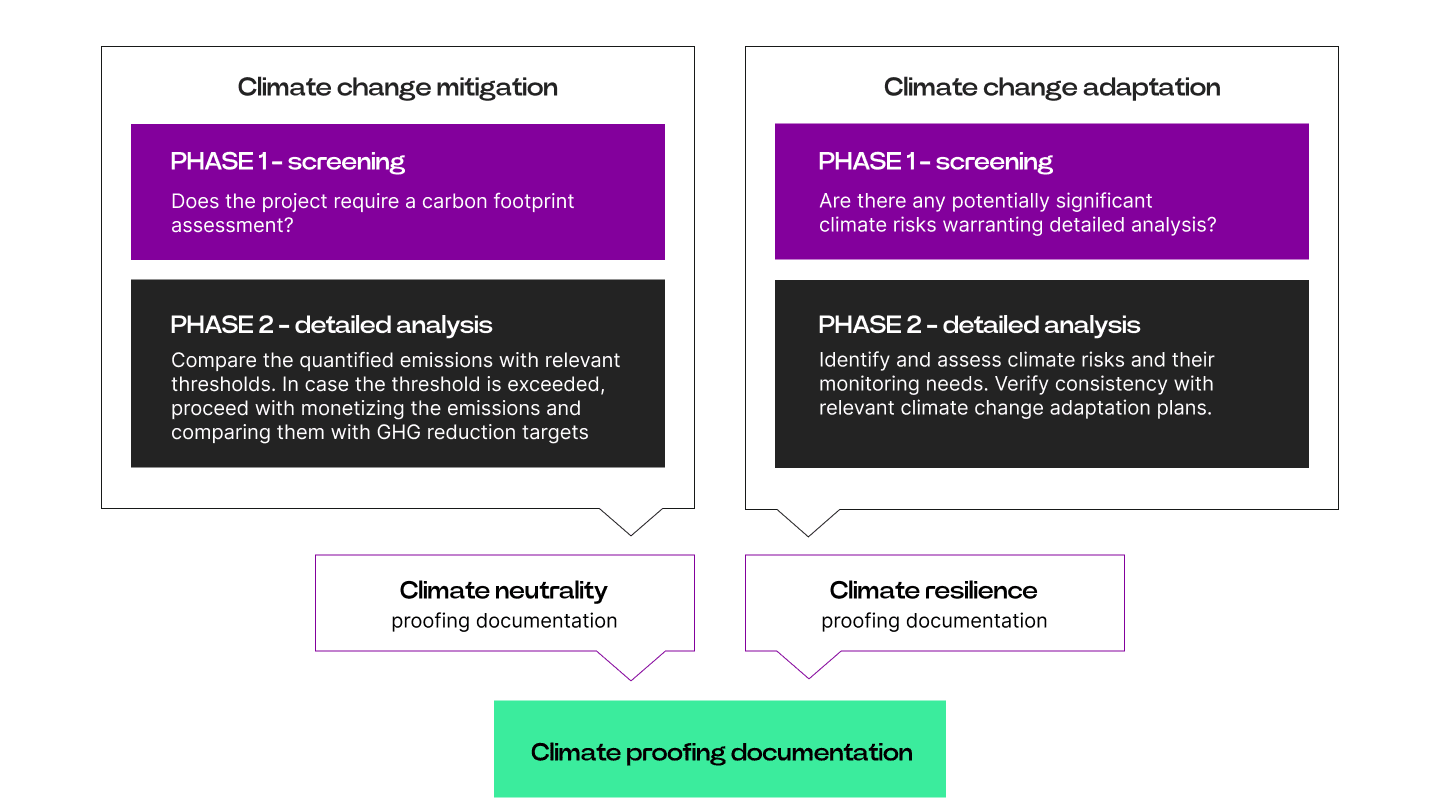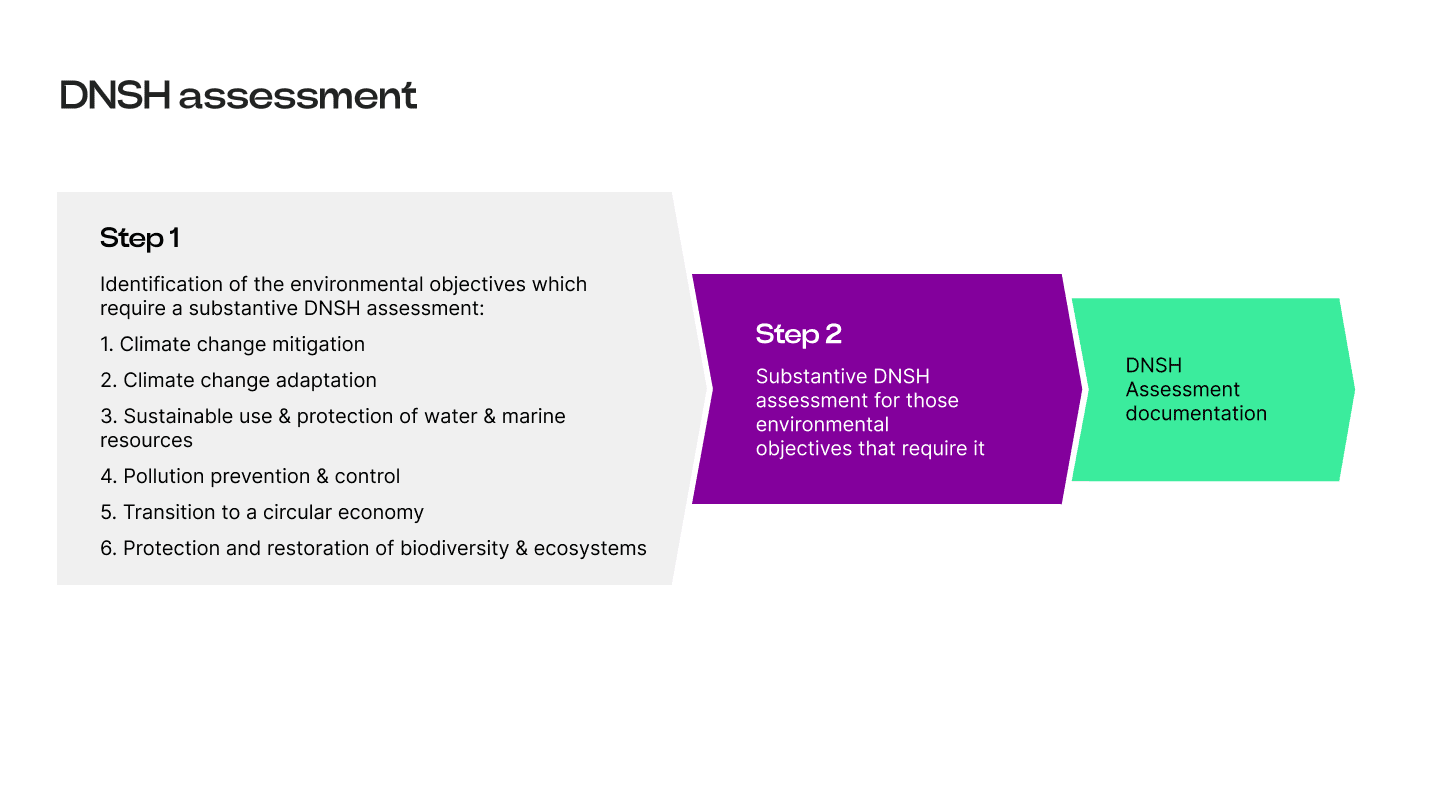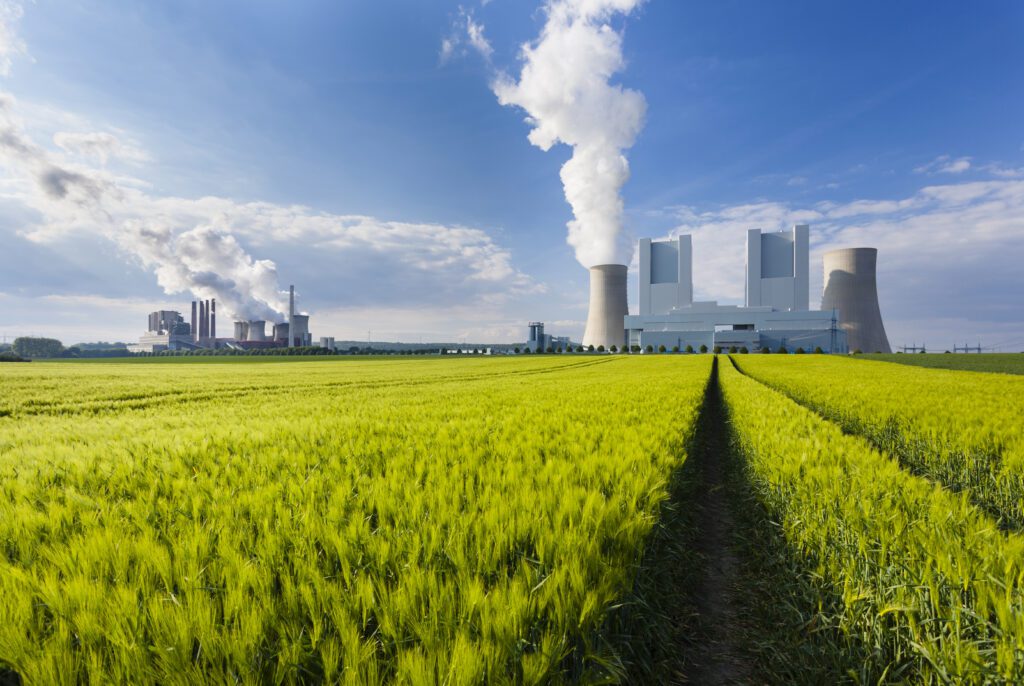The much-needed introduction to “do no significant harm” and climate-proofing assessments
You may have come across two new concepts when, for example, applying for EU funding: “Do No Significant Harm” (DNSH) assessment and climate proofing. As these assessments are here to stay, this article aims to shed some light on their background, rationale, and content.
According to IPCC, anthropogenic global warming currently happens at a rate of between 0.1oC and 0.3oC per decade, meaning that our planet is heading to a certain degree of further warming.
Adapting to future climatic conditions has become crucial in all aspects of life. The infrastructure we build today will remain in service well into the second half of the century and even beyond, making it crucial to ensure its resilience to future climate conditions and its contribution to climate neutrality. Planned infrastructure´s contribution to climate change mitigation and adaptation is evaluated through climate-proofing assessment.
While it is important to consider the implications of climate change, we cannot disregard other environmental topics such as water resources, biodiversity, environmental pollution, etc. Therefore, it is needed if an intended project aims to have a significant impact only on some of the sustainability aspects. It must not cause significant harm to any aspect of the natural environment. That is ensured through a DNSH assessment.
These assessments have become an important part of the application processes for receiving EU funding under instruments such as the Connecting Europe Facility, Cohesion Fund, Just Transition Fund, and Recovery and Resilience Facility, to name a few.
Climate proofing
Climate proofing is a process that aims to assess whether a planned infrastructure will contribute to limiting climate change (i.e., mitigation) while at the same time also being able to withstand any climate-related repercussions that may occur within its lifetime (i.e., adaptation). In this context, infrastructure refers to a broad concept, including buildings, nature-based infrastructures, network infrastructure, other physical assets, etc.
Commission has published special guidance for this process: “Technical guidance on the climate proofing of infrastructure in the period 2021-2027”, which divides the assessment into two pillars: contribution to climate neutrality (climate change mitigation) and to climate resilience (climate change adaptation). Furthermore, these pillars have been divided into two stages: screening and detailed analysis.

DNSH principle assessment
While climate proofing is relevant only for infrastructure projects and considers climate adaptation and mitigation, the DNSH principle applies to a broader scope of projects. It involves six environmental objectives (listed below). The principle stems from the 2020 Taxonomy Regulation, which promotes private sector investment in green and sustainable projects.
The European Commission’s technical guidance states that the assessment process is divided into two steps.
It involves evaluating the environmental topics relevant to the project and determining which ones are at risk of significant impact. Those topics that are at risk require a substantive DNSH assessment. Only when the substantive evaluation reveals that the intended project has no significant impact on any of the environmental objectives can it be considered DNSH-aligned and will be considered for potential funding.

Even though country-specific guidelines are still being shaped and further defined, these two assessments can be considered a definite addition to application processes for EU funding. And rightfully so, as they offer much-needed transparency and common language to enhance investment flows into sustainable activities, thereby contributing to achieving the European Green Deal goals.
Contact us if you want to understand these assessments better or need help carrying out the evaluation. Civitta’s sustainability team already has valuable experience conducting DNSH and climate-proofing assessments and could shed some light on this evolving topic.




